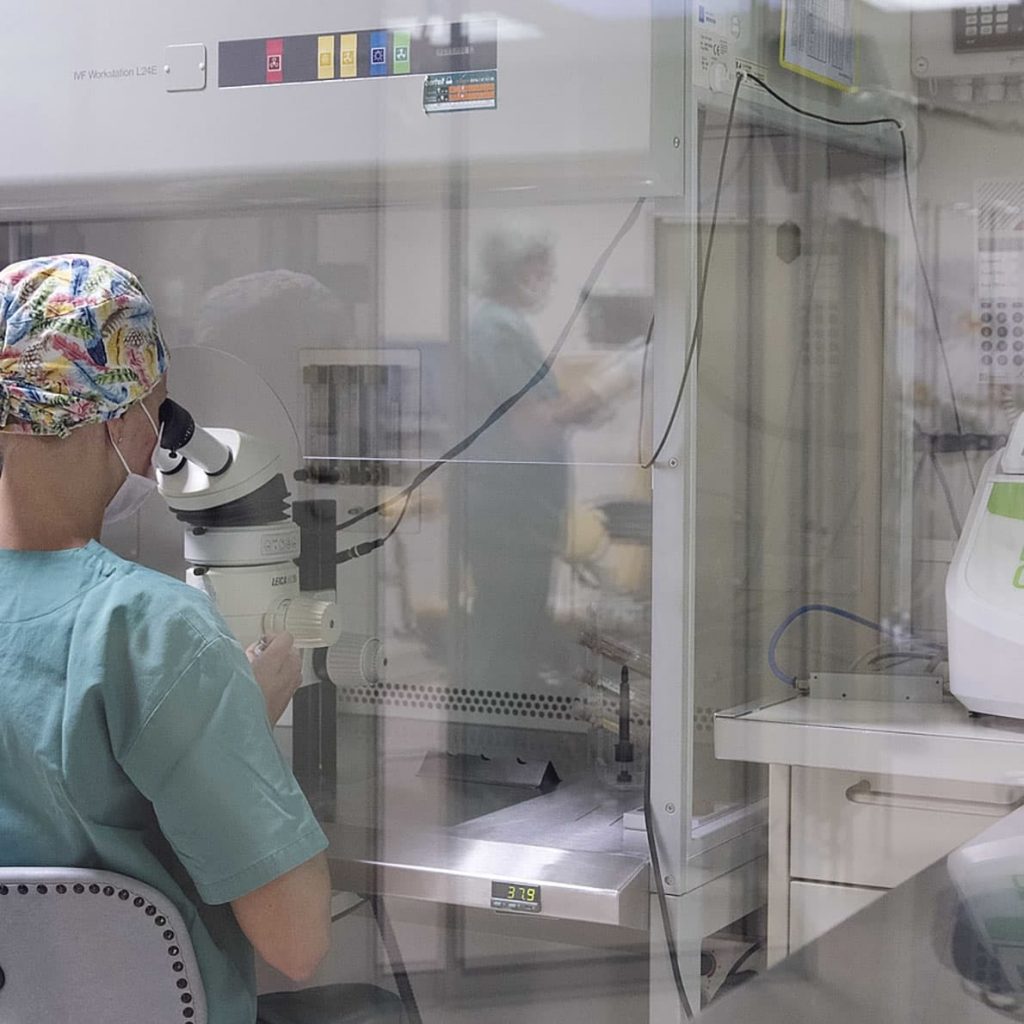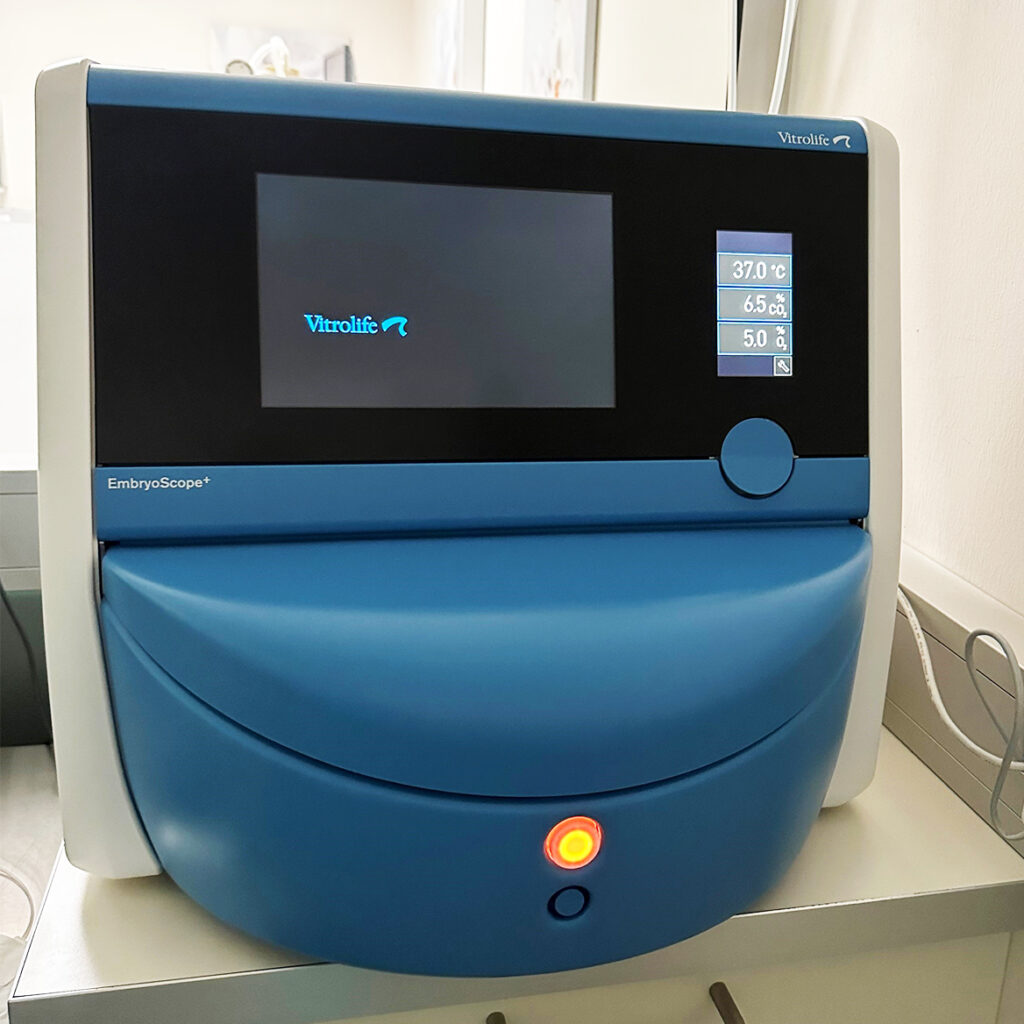"Geri" from the company Merck Serono increases the precision of the procedures and thus your chance of getting pregnant and has now become an indispensable element of our work. The device for vitrification and time-lapse technology can be found in the embryology laboratory of the Kinderwunsch Institute. As is our new Embryoscope+, with more space in an incubator. This ensures maximum precision in all procedures.

During vitrification, oocytes or embryos are frozen by hand by gently cooling them to -196°C in the shortest possible time for optimal storage. In this way, the unfertilised, mature oocytes are safely stored for later fertility treatment.
Our miniaturised Geri incubator has chambers that can be individually adjusted to the needs of each embryo. This helps us minimise interfering factors during this very early and sensitive phase of development and optimally promote the growth of embryos. Oxygen concentration and levels of humidity are carefully controlled. In addition, Geri records images of embryos, thus documenting the development process. We are pleased to say that the related investments have additionally improved the already high standards in our laboratory and will also help you on your way to your desired child.

The new embryoscope from Vitrolife is called Embryoscope+ and is a high-end device that increases the success of the desired pregnancy to 89%. This is because the new Embryoscope+ has more space in an incubator with 15 trays (its predecessor had only 6 trays). It has individual and smaller incubation chambers compared to the older predecessor from 2008 with one large chamber. In addition, there are two different types of trays: egg cultures for 8 embryos and group cultures for 16 embryos (its predecessor had only one type of tray for egg cultures for 12 embryos).
This allows for rapid recovery of culture conditions after the door is opened and minimises culture changes for other patients running in the incubator at the same time.
Here, too, the new technology takes a picture of the cells every 12 minutes - a small film is created. This shows how quickly and, above all, when the different stages of cell division are passed through. This provides information about the quality of the fertilised cell. Only the cell with the most optimal development is then implanted in the patient. This explains the high success rate.